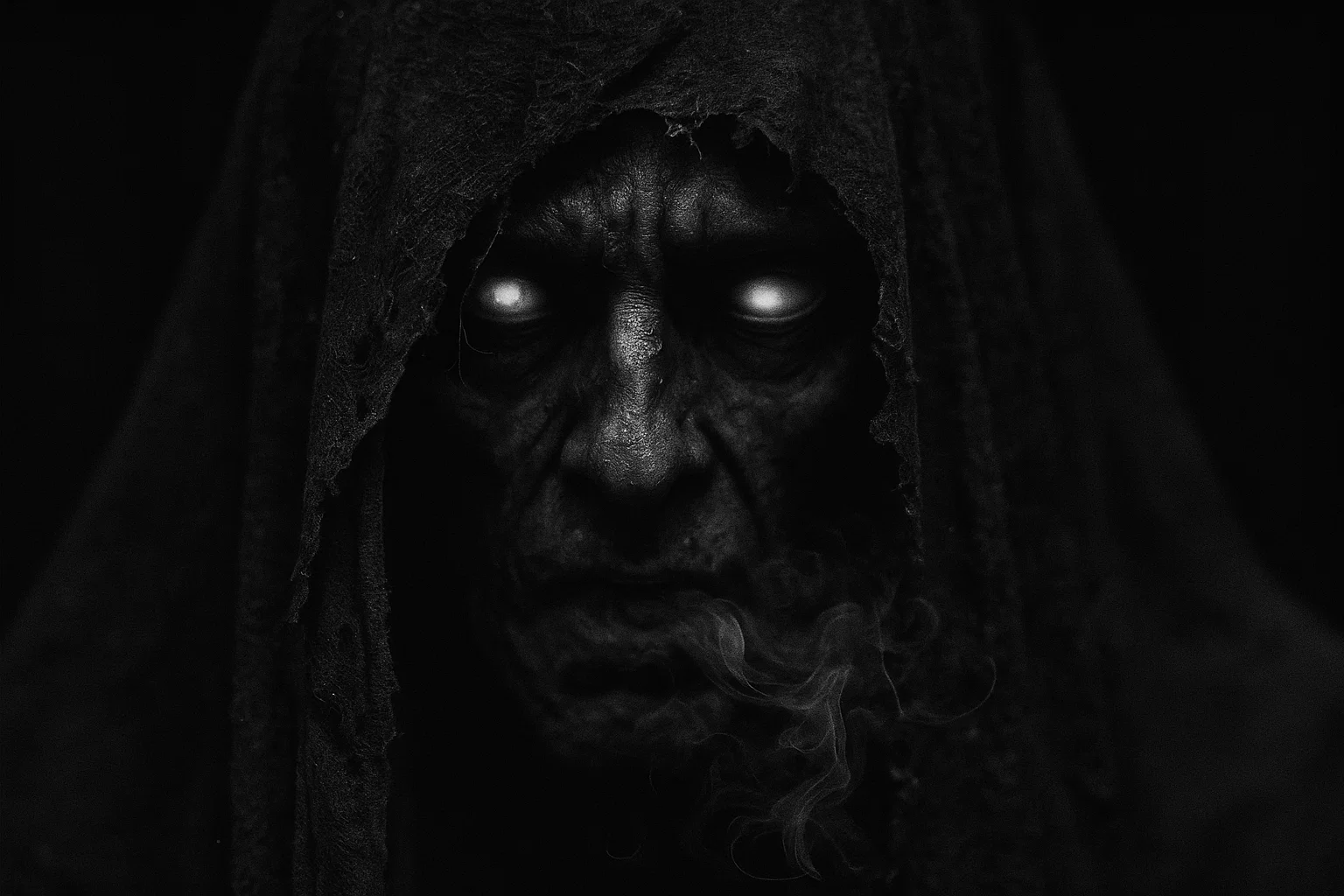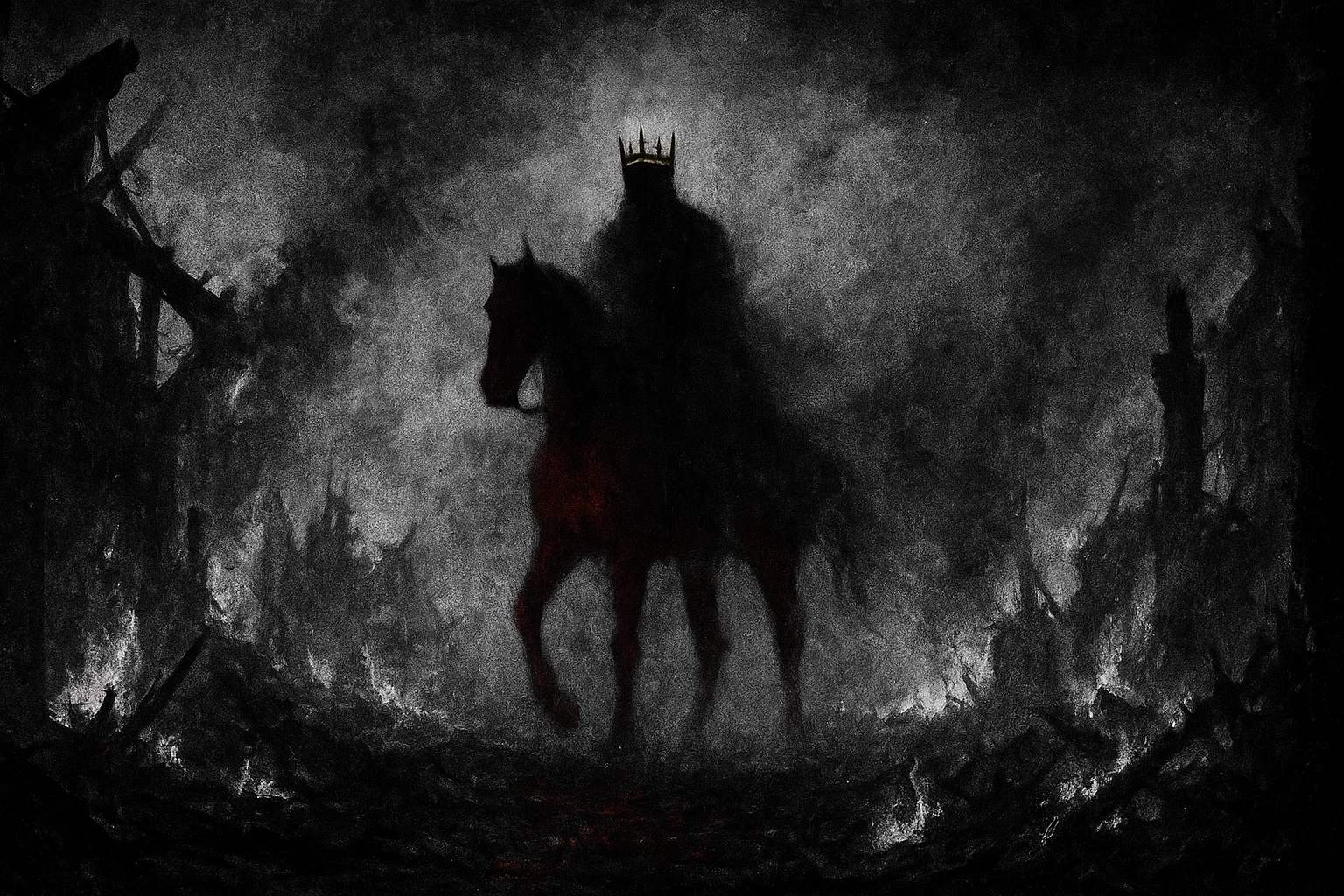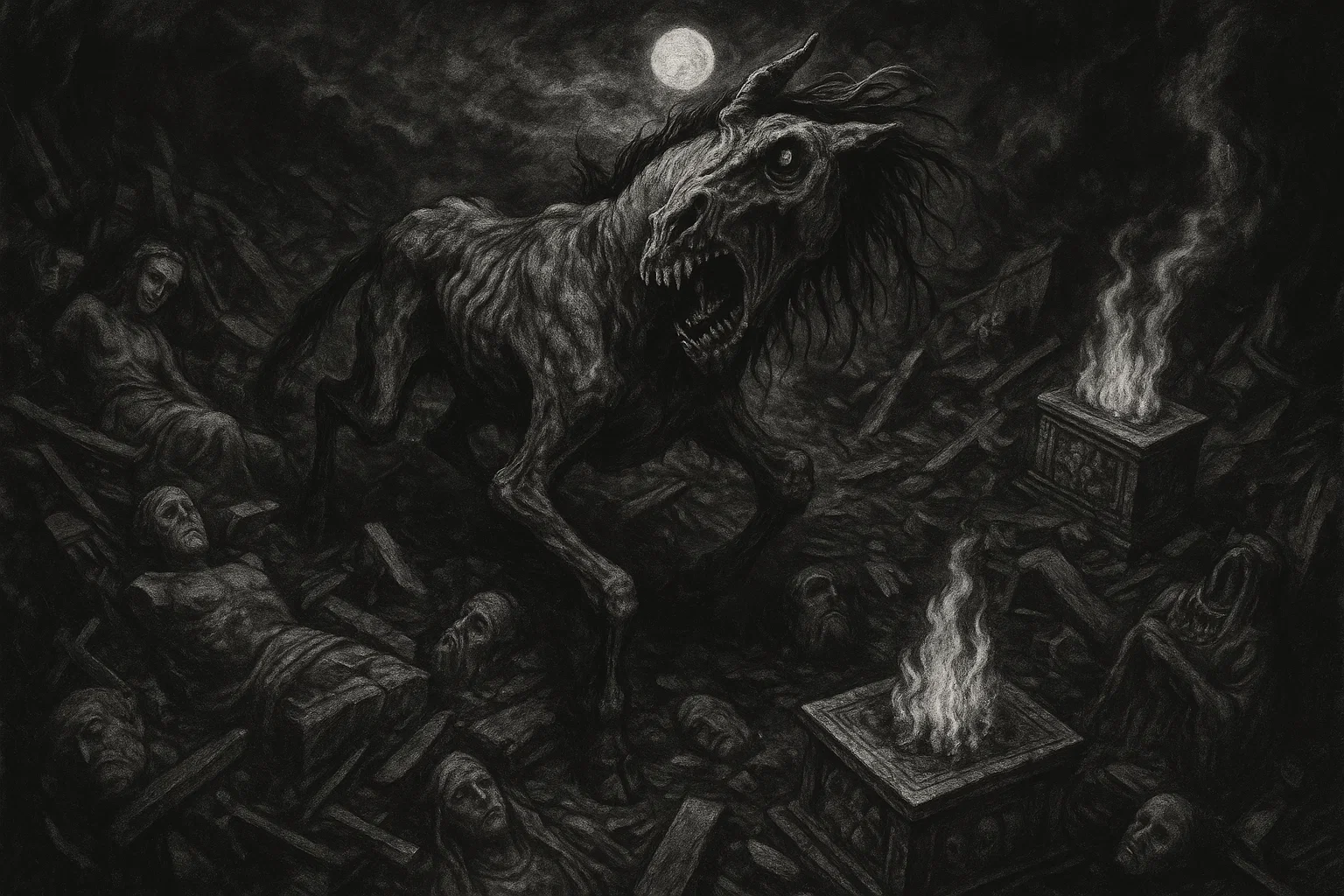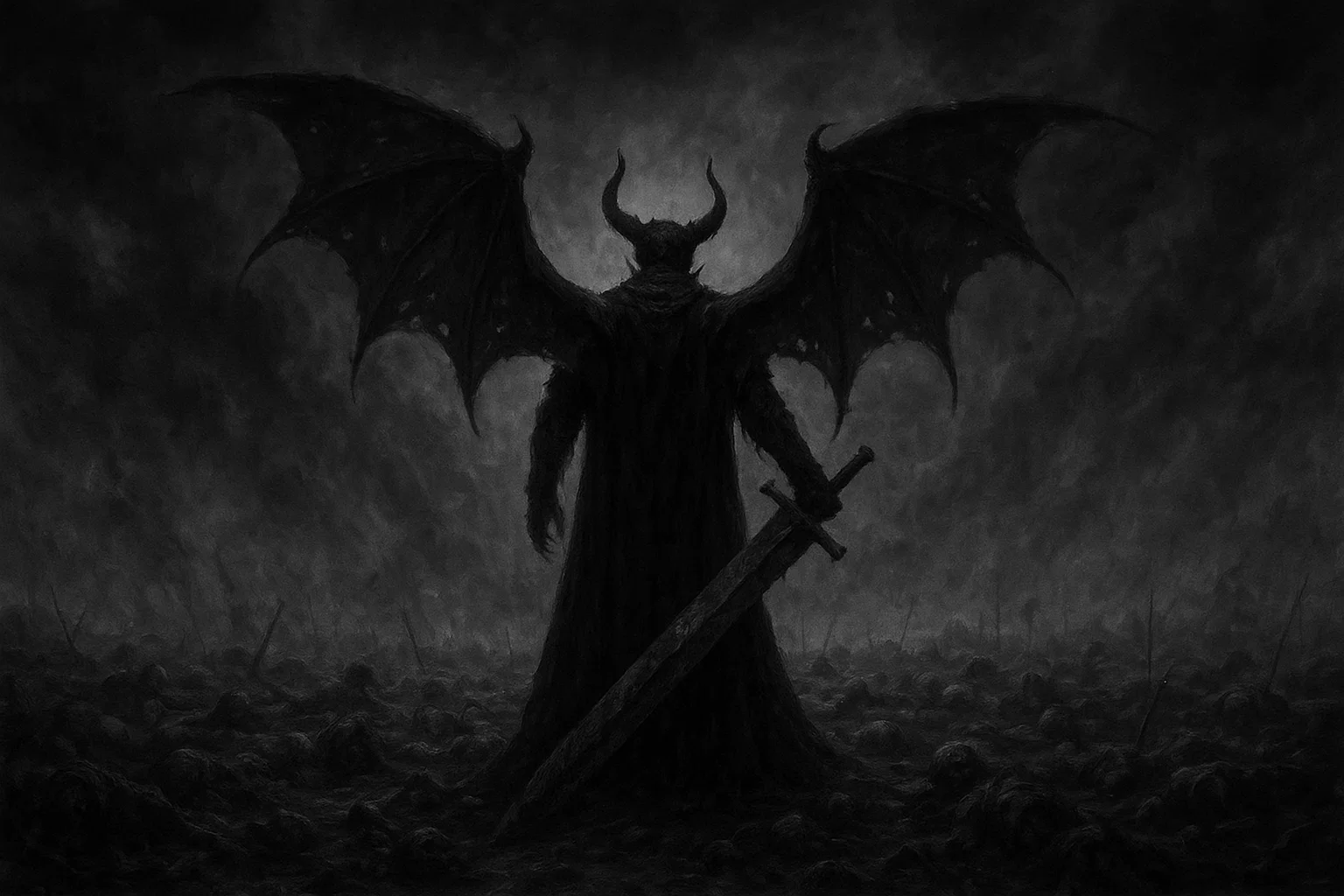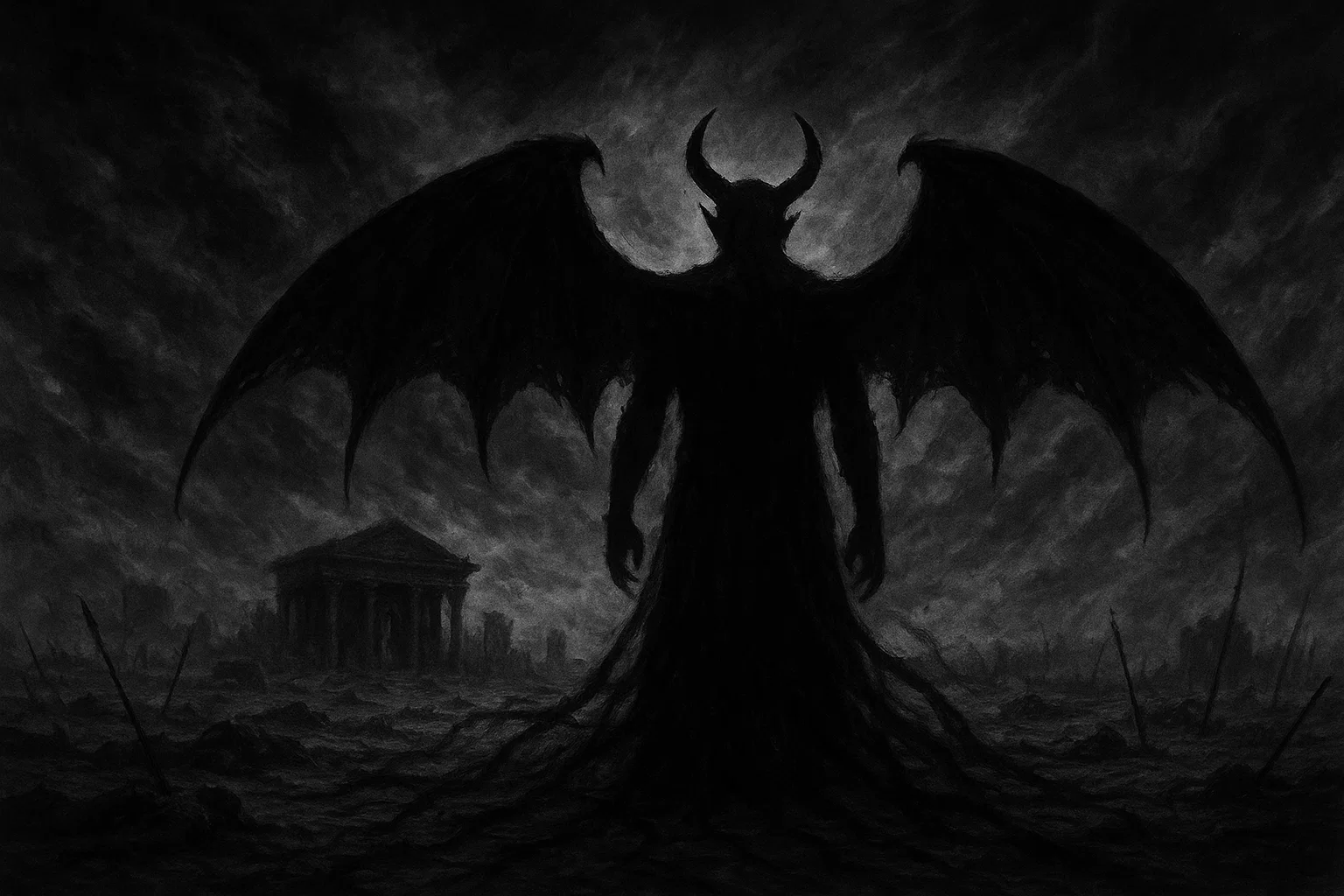In the murky depths of demonology, where infernal forces clash with human frailty, Abalam emerges as a chilling entity, a king of hell whose whispers ignite forbidden desires and eternal damnation.
This demon Abalam, often lurking in the shadows of greater powers, raises haunting questions: What drives a being to corrupt the soul through subtle temptations? How does Abalam’s alliance with Paimon amplify the perils of occult summonings? As we peel back the layers of this enigmatic figure, the boundaries between myth and malice blur, drawing curious minds into a web of demonic intrigue and Goetic secrets.
Abalam, a name that echoes through ancient grimoires and modern horrors, embodies the insidious nature of infernal temptation. Imagine a force that doesn’t just possess bodies but twists emotions, fostering lust and despair in equal measure.
Why does this demon require blood offerings to manifest fully? What hidden agendas lurk behind his regal facade? These queries pull at the threads of occult lore, revealing Abalam as a master of psychological ruin, forever bound to the hierarchies of hell.
Venturing deeper into Abalam’s domain uncovers a tapestry woven with demonic hierarchies, possession rituals, and corrupting powers. From his etymological roots in ancient languages to his pop culture incarnations, Abalam stands as a testament to humanity’s fascination with the abyss. Yet, this introduction only hints at the abyss’s depths—questions of origin, power, and countering his influence await, challenging readers to confront the darkness within.
Table of Contents
Key Information
| Attribute | Details |
|---|---|
| Name | Abalam, Abalim, Abali, Labal, Abalam Demon |
| Title | King of Hell, Prince of Jinnestan, Demonic King, Assistant to Paimon |
| Gender | Male |
| Role | Subordinate king aiding Paimon in executions of commands; corrupter through lust and knowledge; possessor in modern tales |
| Hierarchy | King in the infernal hierarchy, directly under Paimon; part of Goetic kings, obedient to Lucifer as ultimate overlord; rules over segments of hell’s western domains |
| Servitors | Commands portions of Paimon’s 25 legions; no individually named lesser demons, but influences hosts of spirits during joint manifestations |
| Superior Demon | Paimon, with ultimate allegiance to Lucifer |
| Powers | Grants distorted knowledge of arts and sciences; induces lustful temptations and possessions; creates illusions of desire and decay; manipulates perceptions to foster despair |
| Appearance | Shadowy humanoid with ethereal features; sometimes depicted with feminine facial traits and a diadem; manifests amid musical cacophonies and lamentations |
| Etymology | Rooted in Hebrew “abal” meaning to mourn or wither; variations suggest negation of vitality, symbolizing spiritual decay |
| Associated Figures | Paimon (superior), Bebal (fellow king and companion), Lucifer (overlord), potential links to ancient tempters like Tripurasura in extended mythologies |
| Weaknesses | Vulnerable to incomplete rituals without sacrifices; repelled by divine names, angelic invocations, and holy virtues; astrological misalignments weaken manifestations |
| Opposing Angel/Saint | Haziel (angel of mercy opposing Paimon’s domain); Saint Bartholomew (protector against temptations and possessions) |
| Equipment/Tools | Associated with trumpets, cymbals for summonings; sacrificial altars and offerings; no personal weapons, but uses perceptual distortions as tools of corruption |
| Pantheon | Christian demonology, Goetic tradition, Solomonic magic; echoes in Persian and Assyrian infernal lore |
Etymology
The name Abalam delves into ancient linguistic shadows, primarily drawing from Hebrew roots where “abal” signifies “to mourn” or “to lament.” This core meaning paints Abalam as a harbinger of sorrow, a demon whose essence erodes joy and vitality, leaving behind a trail of emotional desolation.
Variations like “Abalim” or “Abali” may incorporate Semitic prefixes such as “ab-,” implying absence or negation, thus portraying Abalam as a force that negates life force. In occult etymology, this ties to concepts of withering, where the demon’s name encapsulates his role in causing spiritual and moral decay.
Scholars speculate connections to Aramaic terms for “fading” or “obscurity,” reinforcing Abalam’s elusive presence in grimoires. Unlike standalone demons, his name often intertwines with Paimon’s, suggesting a symbiotic linguistic evolution in Goetic demonology.
Further layers reveal potential Akkadian influences, where phonetic similarities evoke “abalu,” meaning to dry up or perish. This etymological thread underscores Abalam’s association with desiccation of the soul, a theme prevalent in infernal temptations.
In broader mythological etymology, Abalam might echo ancient tempters, though direct links remain speculative. His name’s mournful connotation aligns with demonic archetypes that exploit human grief, making it a potent symbol in occult nomenclature.
Explorations into Persian derivations hint at “abal,” relating to folly or madness, positioning Abalam as a inducer of irrational desires. This multifaceted etymology enriches understanding of his corrupting influence.
Ultimately, Abalam’s name isn’t mere label but a conceptual vessel, embodying loss and corruption in demonological linguistics. It invites deeper scrutiny into how names shape infernal identities.
What Does the Demon Abalam Look Like?
Abalam’s physical manifestation eludes precise depiction in ancient texts, often inferred from his ties to Paimon’s retinue. He appears as a regal yet ominous humanoid, shrouded in shadows that accentuate his kingly authority while concealing malevolent intent.
Distinct traits include elongated, ethereal limbs and a veiled face, evoking mourning veils symbolic of his etymological roots. Some accounts describe feminine facial features crowned with a diadem, blending allure with terror to seduce victims.
In summonings, Abalam materializes amid auditory hallucinations—faint wails and discordant music—enhancing his spectral presence. His form might shift, adapting to the summoner’s fears, always radiating an aura of decay.
Modern interpretations, like in horror films, portray him as an invasive force, distorting the host’s body with unnatural contortions and lustful expressions. This fluidity underscores his manipulative essence.
You May Also Like: The Midnight Traveler | Horror Story
Historical and Mythological Background
Abalam’s origins trace to medieval Christian demonology, emerging in the Solomonic tradition where demons were cataloged for binding and control. As a subordinate to Paimon, he embodies the hierarchical structure of hell, rooted in Judeo-Christian interpretations of fallen angels.
His mythological genesis may draw from ancient Semitic beliefs, where tempter spirits corrupted humanity. Speculative connections link Abalam to Assyrian demons like Adramelech, sharing themes of child sacrifice and moral erosion, though direct evidence is sparse.
In broader world mythologies, parallels exist with Hindu asuras like Tripurasura, a demon of illusion and destruction, suggesting cross-cultural borrowings in demon lore. Abalam’s mournful essence echoes Greek daimons associated with lamentation and fate.
Persian influences in Jinnestan portray him as a prince of djinn, aligning with Islamic esoteric traditions where ifrits and marids tempt mortals. This fusion highlights Abalam’s role as a bridge between Eastern and Western occultism.
Legends depict Abalam navigating infernal politics, aiding Paimon in rebellions against divine order. His interactions often involve exploiting human weaknesses, turning ambition into ruin.
The Summoning of Paimon and His Kings
Central to Abalam’s lore is the ritualistic summoning where he and Bebal accompany Paimon only upon sacrifice. This myth, from Pseudomonarchia Daemonum, illustrates Abalam’s reluctance, manifesting to amplify teachings on arts but infusing them with corruption.
The narrative warns of perils: incomplete offerings lead to withheld power, trapping summoners in cycles of despair. Abalam interacts with Paimon as a loyal enforcer, binding dignitaries and procuring familiars that whisper lamentations.
Variations in esoteric texts show Abalam inducing visions of lost loved ones, exploiting grief to deepen pacts. His role corrupts seekers, transforming knowledge quests into soul-binding traps.
In one extension, Abalam clashes with angelic guardians during evocations, his mournful cries drowning out divine interventions. This story emphasizes his adversarial nature against heavenly forces.
Abalam in Infernal Court Intrigues
Mythological expansions place Abalam in hell’s scheming courts, mediating alliances under Paimon. He navigates rivalries with demons like Asmoday, using subtlety to maintain power balances.
A legend infers Abalam aiding in the fall of dignitaries, instilling sorrow to shatter resolves. Interactions with Lucifer involve indirect obedience, positioning him as a mid-tier schemer.
In tales of demonic wars, Abalam commands legions against rebellious factions, his illusions sowing discord among enemies. This portrays him as a strategic corrupter.
Connections to ancient deities like Baal, a storm god demonized in Abrahamic texts, suggest Abalam as a vestige of such transformations, embodying fertility twisted into lust.
You May Also Like: Complete Guide to New Mexico Bigfoot Sightings (1976–2025)
Abalam’s Possession Legends in Modern Myth
Pop culture myths, like in “The Last Exorcism,” reimagine Abalam as a possessor targeting innocence. He invades Nell’s body, encouraging lust and defilement, interacting with exorcists through manipulation.
This narrative draws from Goetic roots but amplifies his seductive powers, clashing with saints and angels. Abalam overpowers hosts, birthing hybrid horrors symbolizing ultimate corruption.
Extensions link him to global possession lore, akin to Japanese yokai or African spirits that erode wills. His interactions foster dependency, turning victims into vessels for infernal agendas.
Echoes in Ancient Deity Connections
Speculative origins tie Abalam to Mesopotamian entities like Pazuzu, a wind demon of plagues, sharing protective yet destructive dualities warped into pure malice.
In Egyptian mythology, parallels with Set, god of chaos, suggest borrowings where Abalam represents disorder in infernal forms. These connections enrich his background as a synthesized demon.
Hindu links to Rakshasas, shape-shifting tempters, mirror Abalam’s illusory tactics. Though not direct, these global ties illustrate demonology’s syncretic evolution.
Historical Mentions
| Text/Grimoire | Year | Description | Excerpt |
|---|---|---|---|
| Pseudomonarchia Daemonum (Johann Weyer) | 1577 | Abalam as a king accompanying Paimon with Bebal upon sacrifice, commanding 25 legions partially. | “If Paimon be cited alone by an offering or sacrifice, two kings followe him; to wit, Beball & Abalam, & other potentates: in his host are twentie five legions, because the spirits subject to them are not alwaies with them, except they be compelled to appeere by divine vertue.” |
| Ars Goetia (The Lesser Key of Solomon) | ~17th century | Known as Abalim, a king under Paimon requiring sacrifice for appearance with spirits. | “If Paimon is cited alone, buffering or sacrifice must be done, and he will accept it; then two kings called Beball & Abalam will go to him together with other spirits, often twenty-five legions; but these other spirits do not always come unless the conjurer call upon them.” |
| Dictionnaire Infernal (Jacques Collin de Plancy) | 1818 | Prince under Paimon, part of musical and legionary summonings. | “Paimon… is accompanied by two great princes, such as Bebal and Abalam.” |
| Liber Officiorum Spirituum | ~16th century | Subordinate king to Paymon, emphasizing ritual needs. | “Paymon… two kings called Laball and Abalym… will go to him together with other spirits.” |
| Livre des Esperitz | ~15th-16th century | Assistant king to Poymon, involved in directional invocations. | “Poymon… if he appears alone, a sacrifice must be made to summon Labal and Abalam, two kings who serve under him.” |
| Encyclopedia of Demons in World Religions and Cultures (Theresa Bane) | 2012 | King of Hell, assistant to Paimon, encourages lust and defilement. | “The demon Abalam is a King of Hell and an assistant to Paimon. He takes possession of a human’s body to encourage the human to commit lust, he would defile them.” |
You May Also Like: Crocell – The Mysterious Demon Duke. Powers, Legends, and Lore
Abalam’s Powers and Abilities
Abalam’s abilities center on psychological and perceptual corruption, distinct from brute demonic forces. He specializes in inducing lustful desires, distorting knowledge to foster moral decay, and possessing bodies to amplify temptations.
Unlike common demons with possession alone, Abalam weaves illusions of grandeur laced with sorrow, eroding victims’ wills through regret and unfulfilled cravings. He tempts by revealing partial secrets, binding souls in dependency.
In pop culture, like “The Last Exorcism,” Abalam exhibits seduction mastery, dark magic for body contortions, and illusions to manipulate exorcists. These newer powers emphasize his role in defiling innocence.
His corrupting methods involve exploiting emotional vulnerabilities, turning ambition into lust-driven ruin. Abalam uses visions to instill despair, pushing humans toward immoral acts for illusory relief.
Extended lore attributes him longevity and speech mastery, deceiving through eloquent whispers. These abilities distinguish him as a subtle tempter in Goetic demonology.
Modern interpretations add hybrid creation powers, birthing horrors from possessions, symbolizing ultimate perversion. This evolution broadens his arsenal beyond traditional grimoires.
| Power/Ability | Description | Source | How It Tempts/Corrupts Humans | Countermeasure |
|---|---|---|---|---|
| Lust Induction | Awakens forbidden desires, leading to defilement. | Encyclopedia of Demons | Exploits vulnerabilities, fostering addiction to carnal sins. | Prayers to Saint Bartholomew for purity. |
| Knowledge Distortion | Reveals arts and sciences with corrupting twists. | Ars Goetia | Tempts with incomplete wisdom, causing ethical erosion. | Invocation of Haziel for true clarity. |
| Possession Mastery | Invades bodies, altering behaviors toward lust. | The Last Exorcism (pop culture) | Corrupts hosts into vessels of desire, spreading malice. | Exorcism rituals with holy water. |
| Illusion Creation | Generates visions of decay and grandeur. | Pseudomonarchia Daemonum | Instills false hopes, leading to despair and submission. | Angelic seals and divine virtue. |
| Perceptual Manipulation | Alters senses to induce mournful hallucinations. | Dictionnaire Infernal | Amplifies losses, driving immoral quests for solace. | Fasting and meditation against deceptions. |
| Seduction and Speech | Masters eloquent deception to bind souls. | Modern horror lore | Corrupts through persuasive whispers, eroding morals. | Silence rituals and protective circles. |
How to Counter Abalam’s Powers
Countering Abalam requires meticulous spiritual defenses, focusing on his reliance on offerings and emotional exploits. Invoke Haziel for mercy, disrupting his perceptual manipulations with divine clarity.
Ritual precision is key: incomplete summonings without sacrifices weaken him, allowing banishment through holy names like Tetragrammaton. Protective circles with consecrated elements shield against possessions.
Saint Bartholomew’s intercession counters lust temptations, bolstering resolve against seductive illusions. Incorporate fasting to purify the body, diminishing his hold on desires.
Astrological countermeasures involve avoiding Tuesdays or Scorpio alignments, timing rituals for his diminished influence. Crystals like black tourmaline ground energies, repelling mournful visions.
Exorcisms emphasize virtue, using relics and prayers to expel him from hosts. Holistic approaches include sage smudging and amethyst for intuition, preventing corruption’s spread.
In cases of infestation, communal prayers amplify countermeasures, overwhelming his subtle tactics with collective faith.
You May Also Like: Who Is the Demon Gremory in Ars Goetia?
Abalam’s Role in the Hierarchy of Hell
In hell’s hierarchy, Abalam ranks as a king, yet serves directly under Paimon, who commands obedience to Lucifer. This mid-tier position places him above marquises and dukes but below princes like Beelzebub.
He rules western infernal domains, overseeing realms of intellectual and lustful temptations. His armies comprise segments of Paimon’s 25 legions, used in summonings to enforce decrees.
Notable subordinates include unnamed servitors from these legions, potentially lesser spirits of deception. Superiors extend to Lucifer, with Paimon as immediate overlord.
Allied demons like Bebal form his core companionship, collaborating in court intrigues. Adversaries include independent kings like Bael, rivaling for influence.
Abalam’s relationships emphasize loyalty, navigating politics to maintain status. He mediates disputes, using powers to sow discord among foes.
In broader structures, he aligns with the seven princes’ factions, contributing to hell’s chaotic order through corrupting operations.
Astrological Associations and Symbolism
Abalam’s astrological ties link to Mercury for cunning intellect, amplified by Scorpio’s transformative decay. Elements of water symbolize emotional depths, air for perceptual manipulations.
Planets like Venus influence his lustful aspects, with Saturn evoking mourning and restriction. Colors deep blue and black represent obscurity and sorrow.
Metals such as silver conduct his ethereal energies, while crystals like onyx protect against but also channel his forces. Numbers 25 (legions) and 9 (Paimon’s position) hold symbolic weight.
Days like Tuesday align with martial actions, enhancing summonings. Precious stones including black tourmaline ground his illusions.
Symbolism extends to zodiac Scorpio for intensity, with elemental water fostering corruption’s flow.
| Association | Details |
|---|---|
| Element | Water (emotion), Air (intellect) |
| Planet | Mercury (cunning), Venus (lust) |
| Number | 25 (legions), 9 (hierarchy) |
| Day | Tuesday |
| Metal | Silver |
| Stone/Crystal | Onyx, Black Tourmaline, Amethyst |
| Color | Deep Blue, Black, Crimson |
| Zodiac | Scorpio |
Abalam’s Sigil
Abalam lacks a unique sigil in grimoires, often invoked via Paimon’s geometric design of interlocking lines symbolizing obedience and hidden knowledge. This proxy underscores his subordinate status.
In rituals, practitioners adapt Paimon’s seal with mournful motifs, enhancing Abalam’s manifestations. The absence highlights his shadowy, collective infernal identity.
| Symbol/Item | Association/Meaning | Use in Rituals |
|---|---|---|
| Animal | Camel (endurance, from Paimon’s mount) | Represents persistence in evocations. |
| Plant | Willow (mourning and flexibility) | Burned to invoke sorrowful energies. |
| Incense | Myrrh (purification twisted to corruption) | Smoked for possessive atmospheres. |
| Color | Black (obscurity) | Cloaks altars for hidden temptations. |
| Stone | Onyx (protection against self) | Channels lust without backlash. |
| Metal | Silver (conductivity) | Crafts tools for perceptual spells. |
You May Also Like: Sallos: The Mysterious Demon of Love
Comparison with Other Demons
| Demon | Hierarchy | Powers | Appearance | Key Differences from Abalam |
|---|---|---|---|---|
| Bebal | King under Paimon | Amplifies visions and knowledge | Ethereal, undefined | Identical companionship but more Lucifer-devoted; less focus on lust. |
| Astaroth | Duke | Teaches sciences, invisibility | Nude on dragon | Independent duke; promotes laziness, not mournful corruption. |
| Bael | King | Invisibility, wisdom | Three-headed hybrid | Commands 66 legions alone; aggressive, unlike Abalam’s subtlety. |
| Asmoday | King | Crafts, astronomy | Three-headed on dragon | Focuses on geometry; violent tendencies contrast Abalam’s illusions. |
| Vassago | Prince | Divination, lost items | Mild princely | Reveals truths mildly; no corrupting edge. |
| Foras | President | Herbs, logic | Strong man | Earthly focus; no hierarchical bond to Paimon. |
| Buer | President | Philosophy, healing | Star-shaped lion | Pacifistic healing; opposes Abalam’s defilement. |
| Marchosias | Marquis | Combat, truth | Wolf with wings | Warrior promising redemption; differs from loyalty. |
| Andras | Marquis | Discord, killing | Angel on wolf | Chaotic violence; lacks intellectual temptation. |
| Sitri | Prince | Love incitement | Leopard-headed | Direct love spells; less mournful, more passionate. |
Conclusion
Abalam, the mournful king of hell, weaves a narrative of subtle corruption and infernal servitude, forever tethered to Paimon’s shadow. His powers of lust and illusion serve as tools for soul erosion, reminding seekers of the abyss’s deceptive allure. Through expanded myths and historical ties, Abalam reveals the dangers of unchecked desires.
In contemplating Abalam’s place in demonology, one grasps the intricate hierarchies and global connections shaping infernal lore. His elusive form and etymological depths challenge perceptions, urging caution in occult explorations.
Ultimately, Abalam endures as a symbol of temptation’s peril, where knowledge and desire intertwine to damn the unwary. As demonological studies advance, he remains a stark warning against the darkness that mourns within us all.

